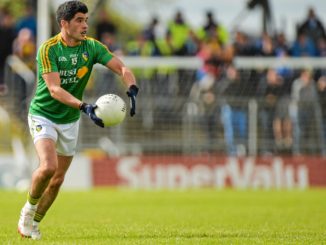
[dropcap]I[/dropcap]nside the National Art Gallery’s exhibition room, the walls are painted a calming violet that harmonises with the vibrant paintings of Roderic O’Conor and his contemporaries. O’Conor, an Irish artist who hailed from Roscommon, was a quiet figure of the Impressionist and Post-Impressionist movements in the late nineteenth century.
Each room is dedicated to the different stages in O’Conor’s career, as we proceed across the floor, we can see O’Conor’s style constantly shifting through his life as influences make their presence, yet there is still something distinct that makes all of his work recognisable.
Although the exhibition displays some of O’Conor’s earliest work, the painter really comes in to his own once he makes his debut to France. From the onset, we can see the Impressionist style beginning to mould how he paints, with the use of optical mixing and thick strokes of the paint brush. From his work in Wales in comparison to his work in Pont Aven, he begins to experiment with artificial colours in natural settings, incorporating pinks and purples to reflect light upon the water, similar to Monet’s Water Lilies series.
However a key player in O’Conor’s development as an artist is Vincent Van Gogh, despite the fact that the painters never met. Arriving two years after the Van Gogh’s death, O’Conor was one of the first to only know the Dutch painter solely through his work. Van Gogh’s use of harsh, unnatural lines to convey direction and shade. This is evident in O’Conor’s Still Life with Apples. The striking, red lines began to become commonplace in his works, a recognisable trait in many right until his death.
A colleague and close friend of O’Conor, Cuno Amiet also began to paint with the trend of stripes. The exhibition room places O’Conor’s and Amiet’s work at two, opposing walls to emphasise how close their paintings began to resemble each other. They act as a mirror of the two, each finished work is enclosed between two dark sketches that allow the painting’s liveliness to fully shine through.
However, the turning point in O’Conor’s career is when he met the post-Impressionist artist Paul Gauguin. The two artists began to work close together, and Gauguin’s style began to steer O’conor’s in a new direction. The red lines began to blur as the artist becomes more interested in the vibrancy of colours within a painting. The exhibition places two of O’Conor’s work, side by side – before Gauguin and after Gauguin (The farm at Levazen Finistère) to demonstrate this point.
Similarly, one can see how O’Conor begins to discard the styles of Impressionism. Instead, he focuses on the emotions that pervade a painting and how that can change its direction. Within this room, we can see when O’Conor truly embarks into Post-impressionism territory alongside Gauguin.
Although Gauguin departs to Tahiti and dies soon after, his influence lives on, especially in O’Conor’s work. In the last room, the exhibition shows two self portraits, one of O’Conor on his own, staring at the viewer, he looks old and hardened to the world. In the other portrait, it’s a full figure and he’s facing away from the viewing, in his art studio. This painting is more flattering with softer strokes, perhaps showing that O’Conor is far more comfortable as an artist than he is as a person.
The exhibition’s curation is excellent, following the story of O’Conor’s own career as well as Post-Impressionism as a whole. The featuring of other contemporary artists helps draw a line between them all, even if they never met.
Aoibhín Bryant
Image Credit: National Gallery of Ireland



